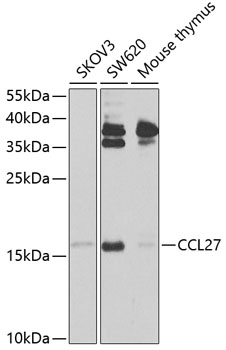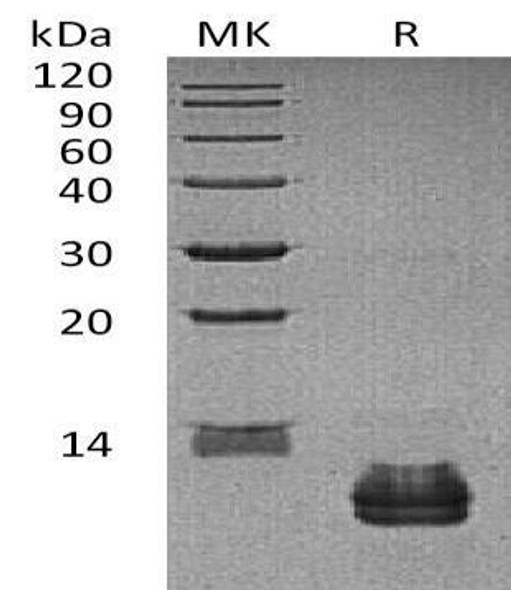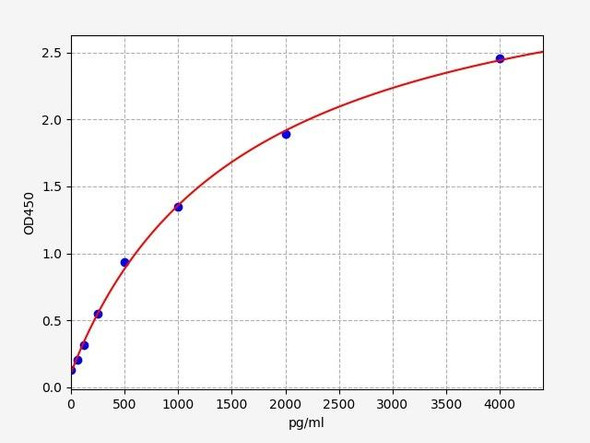Description
Anti-CCL27 Antibody (CAB9864)
The CCL27 Polyclonal Antibody (CAB9864) is a valuable tool for researchers studying CCL27, a chemokine involved in the recruitment and activation of immune cells. This antibody, produced in rabbits, exhibits high reactivity with human samples and has been validated for use in Western blot applications. By binding specifically to the CCL27 protein, this antibody enables researchers to detect and analyze the expression of CCL27 in various cell types, making it an ideal choice for studies in immunology and inflammatory diseases.
CCL27, also known as cutaneous T cell-attracting chemokine (CTACK), plays a crucial role in the immune response by attracting immune cells to sites of inflammation in the skin and other tissues. Its involvement in inflammatory processes makes it a promising target for research into skin diseases, autoimmune disorders, and allergic reactions. By understanding the function of CCL27, researchers can develop new therapies that target the immune response and potentially treat a variety of inflammatory conditions.
| Antibody Name: | Anti-CCL27 Antibody |
| Antibody SKU: | CAB9864 |
| Antibody Size: | 20uL, 50uL, 100uL |
| Application: | WB |
| Reactivity: | Human, Mouse |
| Host Species: | Rabbit |
| Immunogen: | Recombinant fusion protein containing a sequence corresponding to amino acids 25-112 of human CCL27 (NP_006655.1). |
| Application: | WB |
| Recommended Dilution: | WB 1:500 - 1:2000 |
| Reactivity: | Human, Mouse |
| Positive Samples: | SKOV3, SW620, Mouse thymus |
| Immunogen: | Recombinant fusion protein containing a sequence corresponding to amino acids 25-112 of human CCL27 (NP_006655.1). |
| Purification Method: | Affinity purification |
| Storage Buffer: | Store at -20'C. Avoid freeze / thaw cycles. Buffer: PBS with 0.02% sodium azide, 50% glycerol, pH7.3. |
| Isotype: | IgG |
| Sequence: | FLLP PSTA CCTQ LYRK PLSD KLLR KVIQ VELQ EADG DCHL QAFV LHLA QRSI CIHP QNPS LSQW FEHQ ERKL HGTL PKLN FGML RKMG |
| Gene ID: | 10850 |
| Uniprot: | Q9Y4X3 |
| Cellular Location: | Secreted |
| Calculated MW: | 12kDa |
| Observed MW: | 16kDa |
| Synonyms: | CCL27, ALP, CTACK, CTAK, ESKINE, ILC, PESKY, SCYA27 |
| Background: | This gene is one of several CC cytokine genes clustered on the p-arm of chromosome 9. Cytokines are a family of secreted proteins involved in immunoregulatory and inflammatory processes. The CC cytokines are proteins characterized by two adjacent cysteines. The protein encoded by this gene is chemotactic for skin-associated memory T lymphocytes. This cytokine may also play a role in mediating homing of lymphocytes to cutaneous sites. It specifically binds to chemokine receptor 10 (CCR10). Studies of a similar murine protein indicate that these protein-receptor interactions have a pivotal role in T cell-mediated skin inflammation. |
| UniProt Protein Function: | CCL27: Chemotactic factor that attracts skin-associated memory T-lymphocytes. May play a role in mediating homing of lymphocytes to cutaneous sites. May play a role in cell migration during embryogenesis. Nuclear forms may facilitate cellular migration by inducing cytoskeletal relaxation. Binds to CCR10. Belongs to the intercrine beta (chemokine CC) family. |
| UniProt Protein Details: | Protein type:Secreted; Secreted, signal peptide; Motility/polarity/chemotaxis; Chemokine Chromosomal Location of Human Ortholog: 9p13 Cellular Component: extracellular space; extracellular region Molecular Function:chemokine activity Biological Process: cell-cell signaling; immune response; chemotaxis |
| NCBI Summary: | This gene is one of several CC cytokine genes clustered on the p-arm of chromosome 9. Cytokines are a family of secreted proteins involved in immunoregulatory and inflammatory processes. The CC cytokines are proteins characterized by two adjacent cysteines. The protein encoded by this gene is chemotactic for skin-associated memory T lymphocytes. This cytokine may also play a role in mediating homing of lymphocytes to cutaneous sites. It specifically binds to chemokine receptor 10 (CCR10). Studies of a similar murine protein indicate that these protein-receptor interactions have a pivotal role in T cell-mediated skin inflammation. [provided by RefSeq, Sep 2014] |
| UniProt Code: | Q9Y4X3 |
| NCBI GenInfo Identifier: | 7674366 |
| NCBI Gene ID: | 10850 |
| NCBI Accession: | Q9Y4X3.1 |
| UniProt Related Accession: | Q9Y4X3 |
| Molecular Weight: | 12,618 Da |
| NCBI Full Name: | C-C motif chemokine 27 |
| NCBI Synonym Full Names: | chemokine (C-C motif) ligand 27 |
| NCBI Official Symbol: | CCL27 |
| NCBI Official Synonym Symbols: | ALP; ILC; CTAK; CTACK; PESKY; ESKINE; SCYA27 |
| NCBI Protein Information: | C-C motif chemokine 27; skinkine; CC chemokine ILC; IL-11 Ralpha-locus chemokine; small-inducible cytokine A27; IL-11 R-alpha-locus chemokine; cutaneous T-cell attracting chemokine; cutaneous T-cell-attracting chemokine; small inducible cytokine subfamily A (Cys-Cys), member 27 |
| UniProt Protein Name: | C-C motif chemokine 27 |
| UniProt Synonym Protein Names: | CC chemokine ILC; Cutaneous T-cell-attracting chemokine; CTACK; ESkine; IL-11 R-alpha-locus chemokine; Skinkine; Small-inducible cytokine A27 |
| Protein Family: | C-C motif chemokine |
| UniProt Gene Name: | CCL27 |
| UniProt Entry Name: | CCL27_HUMAN |









